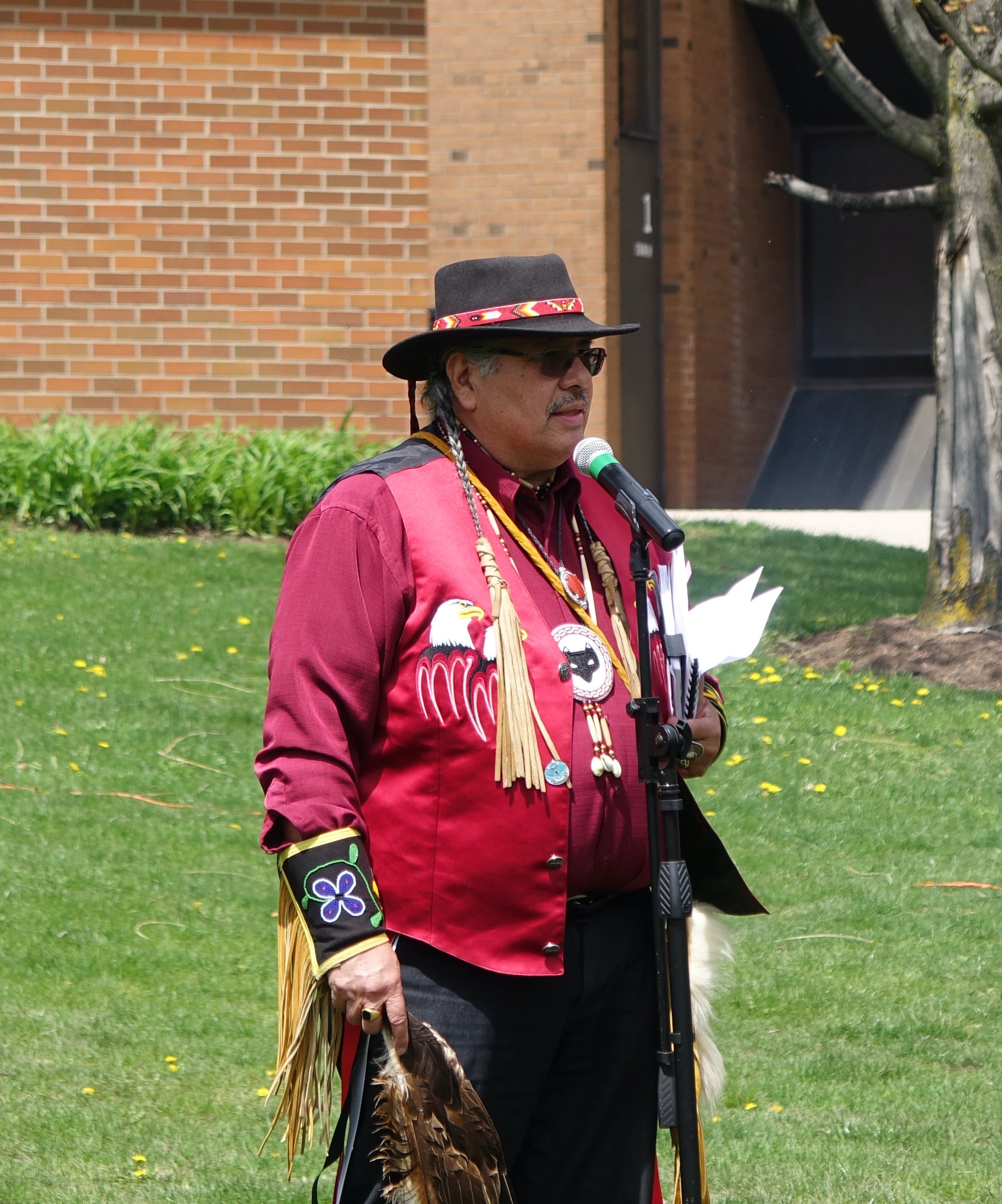
Red Dress Day at Waterloo
Raising awareness for the missing and murdered Indigenous women, girls and Two-Spirit People

Raising awareness for the missing and murdered Indigenous women, girls and Two-Spirit People
By Angelica Marie Sanchez University RelationsOn May 5, the University of Waterloo community came together to observe Red Dress Day, also known as the National Day of Awareness for Missing and Murdered Indigenous Women and Girls and Two-Spirit People (MMIWG2S). The commemoration ceremony was led by Indigenous Knowledge Keeper, Elder Myeengun Henry, at B.C. Matthews Hall (BMH) Green. The Waterloo community was invited to help hang red dresses on trees around BMH Green to represent and honour the lives of the missing and murdered, while showing solidarity with their family and loved ones.
“We’re so proud that the University of Waterloo has taken on the commitment to Indigenous People by implementing these ceremonies because the students who graduate from this University will now know how important it is to know about Indigenous People,” Elder Henry said. “And when the students leave here, it’s an avenue for the future, for the people to find a way to close the gap in this country between Indigenous and non-Indigenous people, and to stop the violence and the oppression against Indigenous People that have been plaguing our community since Christopher Columbus.”

MMIWG2S is an ongoing human rights crisis of gender-based and racialized violence in Canada. In 2019, the MMIWG National Inquiry released their final report which found that staggering rates of violence against Indigenous women and girls amounts to race-based genocide. Between 1980 and 2012, more than 1,000 murders of Indigenous women, girls and Two-Spirit People were recorded by the police. Where an estimate of more than 4,000 Indigenous people has gone missing during the same period.
Jaime Black is an Indigenous artist who created the REDress project — an art installation — by hanging empty, red dresses to represent the missing and murdered Indigenous women, girls and Two-Spirit People. Since 2010, red dresses have become an important symbol of strength and honour the Indigenous women who have shared their story and the families who have lost their loved ones.
Red Dress Day was established as a call to action to address and redress the ongoing crisis on the gender-based and racialized violence due to the effects of colonialism.
“As we see the red dresses hanging from windows and public spaces, it’s a simple but strong representation to see those empty, red dresses. It really strikes your heart to see them,” said Jean Becker, associate vice-president, Office of Indigenous Relations. “The University and the Office of Indigenous Relations are working towards indigenization by building a place where Indigenous People can thrive and have their history acknowledged and valued through campus life and learning.”

Each year, the University participates in the 16 Days of Activism Against Gender-based Violence through the collaborative community initiative, Bridge, where participants tie red pieces of fabric to the bridge between Environment 3 and United College, while taking turns reading aloud the names of more than a thousand murdered and missing Indigenous women, girls and Two-Spirit People. The red ties are hung in honour of these lost relatives and serve as a way to show love and support, while communicating thoughts and prayers to spirit.
Through these initiatives we reflect on our responsibilities and remind ourselves that we can take actions in our everyday lives to stop gender-based violence against Indigenous women, girls and Two-Spirit People. Red Dress Day on campus is part of Waterloo’s commitment to indigenization, by creating a safe space for all University community members to learn about the ongoing crisis and the lived experience of Indigenous people across all Nations in Canada.
The day’s activities will be followed by several more events as part of the University’s observance of National Indigenous History month in June.
This is an emotional day that can be difficult for many people. If you’re struggling or need someone to talk to, please reach out for support. Here are some resources:
EmpowerMe - call 24/7: 1-833-628-5589

Read more
An important symbol of Indigenous acknowledgement, the Eagle Staff will serve as a beacon of reconciliation

Read more
Working to implement Indigenization on campus

Read more
President Goel reflects on the Commitment Ceremony that took place on September 22
The University of Waterloo acknowledges that much of our work takes place on the traditional territory of the Neutral, Anishinaabeg, and Haudenosaunee peoples. Our main campus is situated on the Haldimand Tract, the land granted to the Six Nations that includes six miles on each side of the Grand River. Our active work toward reconciliation takes place across our campuses through research, learning, teaching, and community building, and is co-ordinated within the Office of Indigenous Relations.